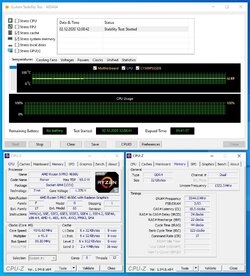- Joined
- Dec 18, 2000
I'd love to be the attorney litigating a case based on that. They provide a tool for AMD customers to use, but if you use it, your warranty is null and void. Really AMD? Seriously? Give me a fricken' break!“The Curve Optimization tool will be part of AMD’s Precision Boost Overdrive toolkit, meaning that using it will invalidate the warranty on the hardware...”

